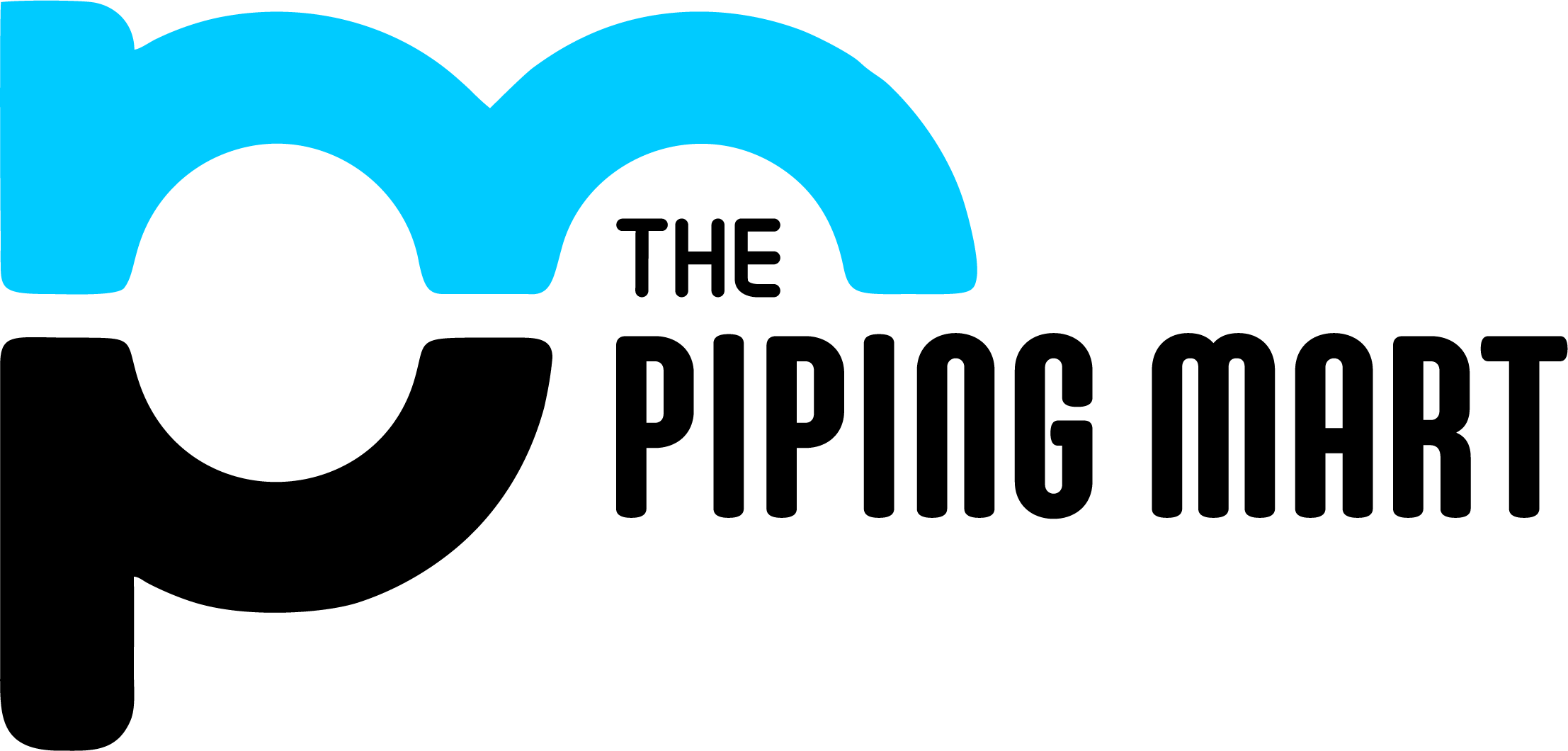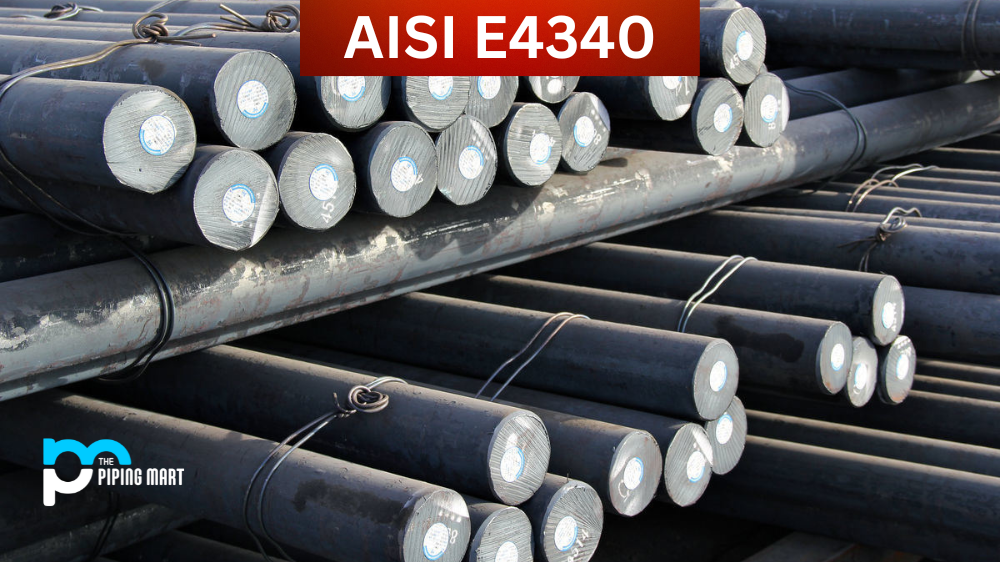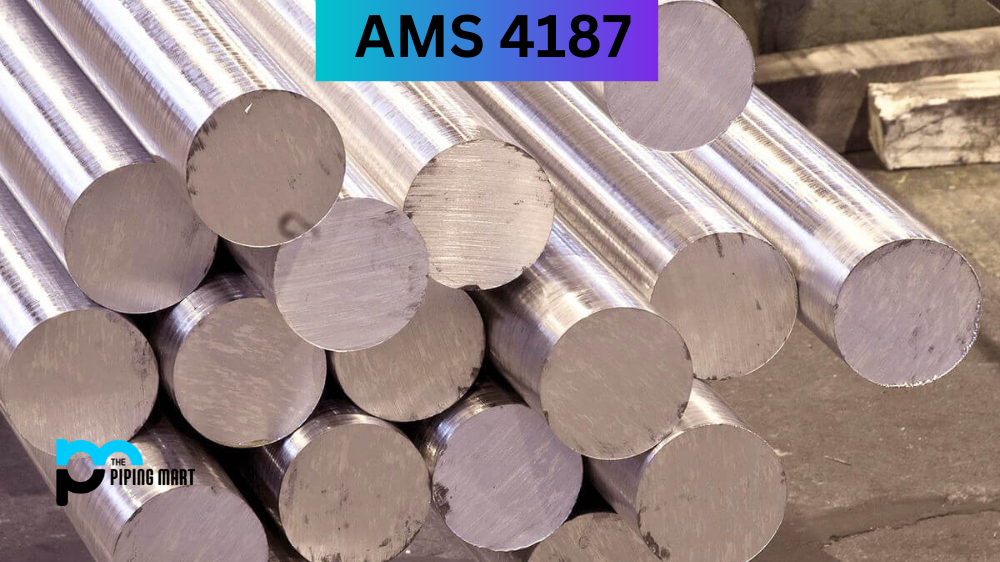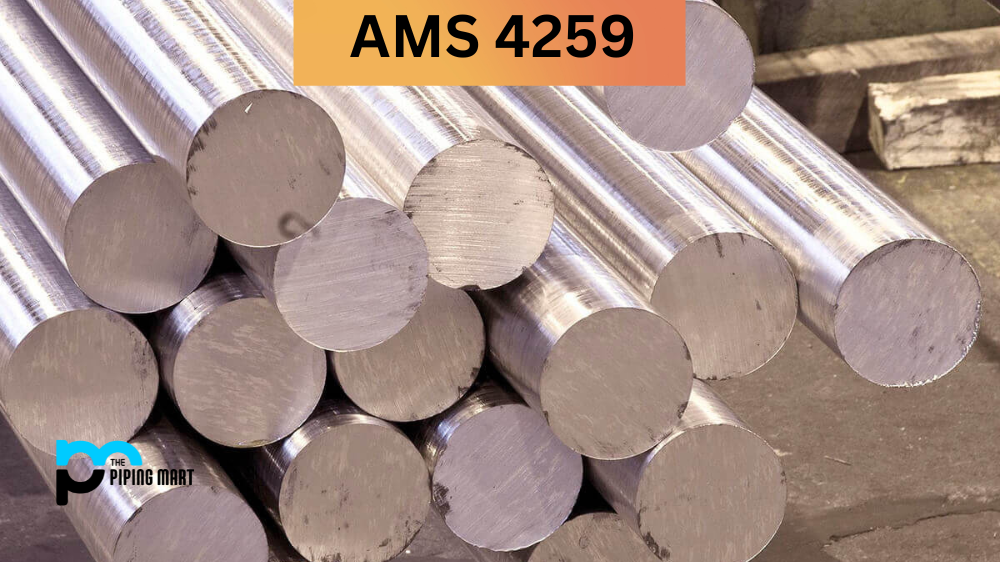If you’re in the market for a steel alloy that provides excellent strength, wear resistance, and fatigue resistance, then you need to take a look at UNS G43406. AISI E4340 high-strength steel alloy is used for a variety of applications due to its versatility and durability. AISI E4340 Alloy Steel, also referred to as UNS G43406, is a low-alloy steel that is known for its high strength and toughness. It is mainly composed of iron, chromium, nickel, molybdenum, and small amounts of other elements such as carbon and manganese, all of which work together to provide its exceptional properties. This steel is often used in various applications that require high tensile strength and good machinability, such as gears, shafts, and bolts. Additionally, AISI E4340 Steel can be heat-treated to enhance its properties, making it even more versatile. With its unique composition and properties, AISI E4340 Alloy Steel is a reliable and popular choice for many industries. Let’s take a closer look at some of the uses and properties of E4340 Alloy Steel.
What Forms of AISI 1526 is Available at Piping Mart?
- Nut
- Bar
- Bolt
- Pipe
- Screw
- Tubing
- Valves
- Washers
- Flanges
- Fasteners
- Electrodes
- Stud Bolts
- Sheet Plates
- Pipe Fittings
- Forged Fitting
- Instrumentation Fittings
AISI E4340 Composition
| Element | Content (%) |
|---|---|
| Iron, Fe | 95.175-96.27 |
| Nickel, Ni | 1.65-2.00 |
| Chromium, Cr | 0.700-0.900 |
| Manganese, Mn | 0.650-0.850 |
| Carbon, C | 0.380-0.430 |
| Molybdenum, Mo | 0.200-0.300 |
| Silicon, Si | 0.150-0.300 |
| Phosphorous, P | ≤ 0.0250 |
| Sulfur, S | ≤ 0.0200 |
AISI E4340 Physical Properties
| Properties | Metric | Imperial |
|---|---|---|
| Density | 7.85 g/cm3 | 0.284 lb/in³ |
AISI E4340 Mechanical Properties
| Properties | Metric | Imperial |
|---|---|---|
| Tensile strength | 745 MPa | 108000 psi |
| Yield strength | 470 MPa | 68200 psi |
| Bulk modulus (typical for steel) | 140 GPa | 20300 ksi |
| Shear modulus (typical for steel) | 80.0 GPa | 11600 ksi |
| Elastic modulus | 190-210 GPa | 27557-30458 ksi |
| Poisson’s ratio | 0.27-0.30 | 0.27-0.30 |
| Elongation at break (in 50 mm) | 22.00% | 22.00% |
| Reduction of area | 50.00% | 50.00% |
| Hardness, Brinell | 217 | 217 |
| Hardness, Knoop (converted from Brinell hardness) | 240 | 240 |
| Hardness, Rockwell B (converted from Brinell hardness) | 95 | 95 |
| Hardness, Rockwell C (converted from Brinell hardness, value below normal HRC range, for comparison purposes only) | 17 | 17 |
| Hardness, Vickers (converted from Brinell hardness) | 228 | 228 |
| Machinability (annealed and cold drawn. Based on 100 machinability for AISI 1212 steel) | 50 | 50 |
AISI E4340 Thermal Properties
| Properties | Metric | Imperial |
|---|---|---|
| Thermal expansion co-efficient (austenitized 870°C (1600°F), 545°C (1010°F) temper for 2 hrs/@ -70-20°C/-94- 68°F) | 11.3 µm/m°C | 6.28 µin/in°F |
| Thermal conductivity (typical steel) | 44.5 W/mK | 309 BTU in/hr.ft².°F |
AISI E4340 Equivalent
| AMS 6415 | ASTM A331 | ASTM A519 | ASTM A752 | ASTM A829 |
| MIL S-5000 | MIL S-83135 | SAE J1397 | SAE J404 | ASTM A304 |
| ASTM A505 | SAE J770 | MIL SPEC MIL-S-5000 |
AISI E4340 Uses
AISI E4340 can be used in a wide range of applications due to its versatility. It is commonly used in automotive components, aerospace components, shafts and gears, as well as fasteners. It has also been used in military applications such as tanks and armoured personnel carriers due to its strength and durability.
AISI E4340 Uses in Industries
Aerospace Industry
One of the primary uses of AISI E4340 is in the aerospace industry. This steel alloy is often used to make critical components for aircraft, such as landing gear, engine parts, and structural components. The high strength and fatigue resistance of E4340 makes it a popular choice for these applications.
Automotive Industry
AISI E4340 is also commonly used in the automotive industry. This steel alloy is often used to make gears, shafts, and other components that require high strength and wear resistance. E4340 can be heat treated to achieve different hardness levels, making it suitable for various automotive applications.
Oil and Gas Industry
The oil and gas industry relies on AISI E4340 for its drilling equipment and machinery. This steel alloy is known for its high toughness and impact resistance, making it ideal for use in harsh environments such as offshore drilling rigs. E4340 can withstand extreme temperatures and pressures, making it a reliable choice for this industry.
Defense Industry
Due to its high strength and durability, AISI E4340 is widely used in the defence industry for manufacturing weapons, armour plates, and other military equipment. The steel’s ability to withstand heavy impacts makes it well-suited for these applications.
Tooling Industry
AISI E4340 is popular in the tooling industry due to its excellent machinability and wear resistance properties. It is often used to make cutting tools, dies, moulds, and other precision tools that require high strength and toughness.
Construction Industry
AISI E4340 is commonly used in heavy-duty equipment such as cranes, excavators, and bulldozers in the construction industry due to its high tensile strength and impact resistance. It can also be found in structural components of buildings where a high strength-to-weight ratio is required.
AISI E4340 Corrosion Resistance
AISI E4340 has excellent corrosion resistance due to its high chromium content. Chromium helps protect against oxidation and pitting caused by acidic environments or other corrosive materials. Additionally, it offers good stress corrosion cracking resistance when exposed to chloride ions or other water-soluble salts. This makes it an ideal choice for parts that are likely to be exposed to harsh environments or chemicals.
AISI E4340 Heat Resistance
AISI E4340 is capable of withstanding very high temperatures without losing its strength or becoming brittle. This makes it suitable for use in applications where parts may be exposed to extreme heat, such as aircraft engines or turbines. Additionally, it is relatively easy to work with at elevated temperatures, so it can be formed into complex shapes without too much difficulty.
AISI E4340 Heat Treatment
The heat treatment process for AISI E4340 involves heating it up to a specific temperature before rapidly cooling it down via quenching in oil or water, depending on the desired properties being sought after by the user. The combination of temperature cycles and rapid cooling allows the steel alloy to form grain structures that offer superior strength and other desirable properties, such as wear resistance and fatigue resistance, compared to other steel alloys that have not undergone heat treatment processes.
AISI E4340 Machining
AISI 4340 can be machined fairly easily with standard machining techniques, although care must be taken at higher speeds because this material can become quite hard during machining operations if not cooled properly during cutting operations. High-speed tools may also be necessary for greater accuracy while maintaining reasonable machining times.
AISI E4340 Welding
Welding AISI 4340 requires preheating prior to welding, which helps reduce distortion while ensuring superior weld integrity when compared with welding without preheating prior to welding operations. Additionally, special attention must be taken when selecting filler materials because some filler materials may lead to poor weld integrity, which could result in catastrophic failure under certain conditions if not addressed properly before welding operations begin.
Conclusion:
Overall, AISI 4340 is an ideal choice for those looking for an all-around steel solution due to its excellent strength, wear resistance, fatigue resistance, corrosion resistance, heat resistance and ease of machining & welding, making it one of the most versatile steels available today! Whether you’re looking for automotive components, aerospace components, shafts & gears, fasteners, military applications tanks & APCs or anything else – you won’t go wrong with this versatile steel alloy!

Abhishek is a seasoned blogger and industry expert, sharing his insights and knowledge on various topics. With his research, Abhishek offers valuable insights and tips for professionals and enthusiasts. Follow him for expert advice on the latest trends and developments in the metal industry.




